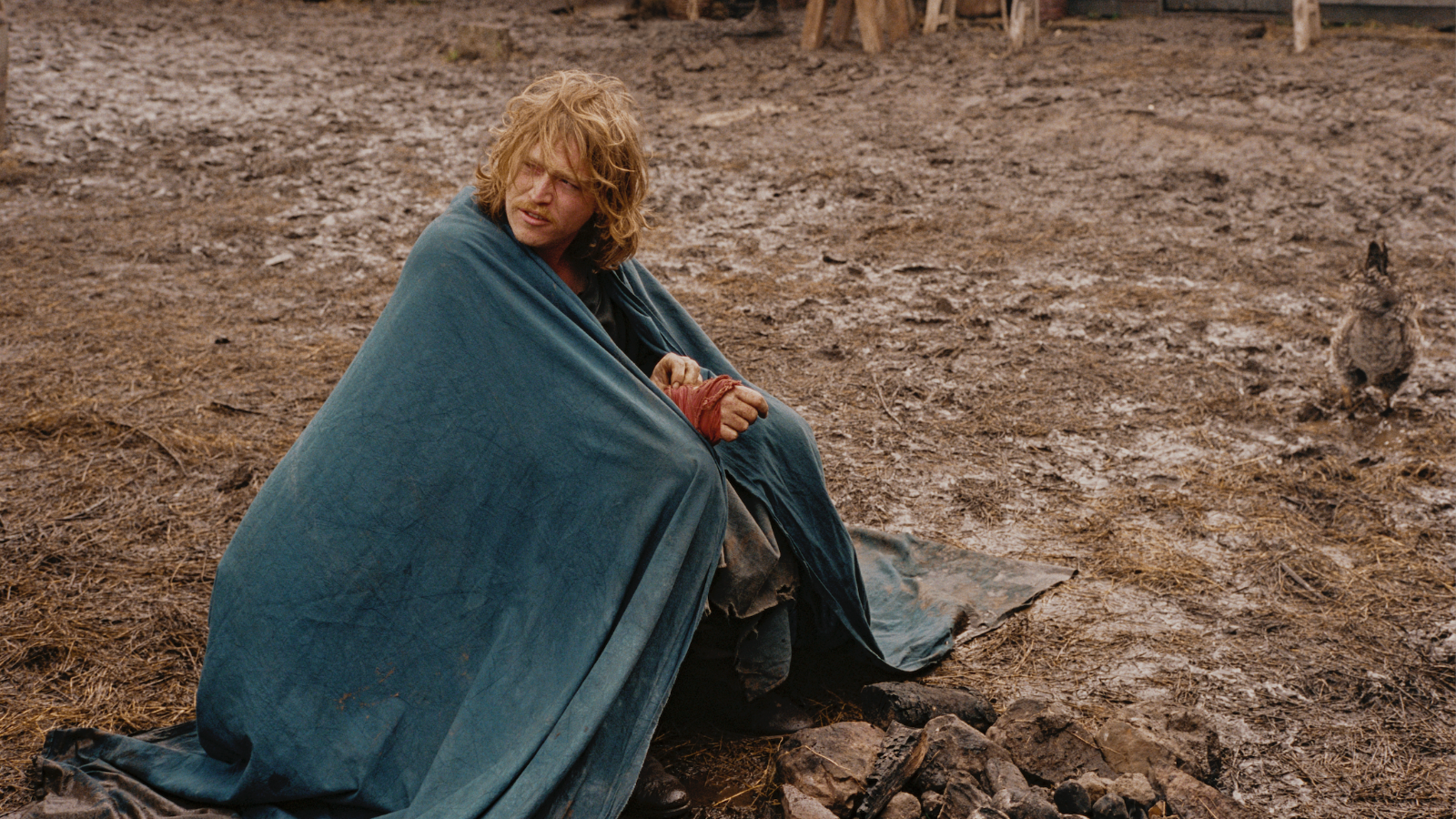The leaves are changing, the weather is cooling, and the cinephile set is lining up outside of Alice Tully Hall and the Walter Reade Theater. New York is once again welcoming fall with the latest edition of the New York Film Festival. Since its inception in 1963 with the opening night screening of Luis Buñuel’s “The Exterminating Angel,” the festival has championed artists from abroad, and this year’s lineup is no exception with movies from Brazil, Spain, India, South Korea, Benin, and Palestine, and more including “Stranger Eyes” from Singapore, “Harvest” from the U.K., and “Who by Fire” from Canada.
In Yeo Siew Hua’s “Stranger Eyes,” a mystery becomes the launch pad for a broader meditation on modern day isolation and surveillance culture. The movie opens with a cheerful video of a family at a picnic on a bright sunny day. Mom Peiying (Anicca Panna) and dad Junyang (Chien-Ho Wu) are beaming, their baby Bo is giddy while grandmother Shuping (Vera Chen) holds the camera. The video is but a warm memory of the past now that the bouncing baby girl has gone missing. Her parents are shadows of their former selves, their relationship in shambles as they shuffle to and from the police station and the playground where Bo was taken. But when a mysterious DVD appears, it reveals that someone has been watching this family for a long time and perhaps holds the key to getting their daughter back.
“Stranger Eyes” unravels its mystery DVD by DVD as it builds up the emotional stakes. Yet despite its thrilling trappings, the movie is mostly reserved, holding in its tension until the dam bursts, at which point, grief and rage drive the characters to hasty action. With the help of the police, they learn that a neighbor from across their building, Wu (Lee Kang-sheng), has been recording them, opening up a “Rear Window” on their lives on display to their neighbors and vice versa. Yeo attempts to sympathize with those who take up a camera to follow strangers around, and while it might work to humanize the character’s motivation, it felt off-putting as someone who has been virtually harassed and stalked before. Just because we live in a surveillance state, doesn’t mean we have to feel at home in it.
Yeo’s layered film goes beyond the conventional plot of a mystery to explore each character’s isolation in a crowded city and how the constant access to a camera has affected us. Each one feels the need to relate to another person, to post in the hopes of finding another lonely soul to connect with, to scroll video after video for the semblance of a parasocial relationship, or fixate on past images. Our mistakes, our daily chores, our joys, and the worst moments of our life are almost all accessible to us with just a few clicks. In our modern day and age, is there any escape?

A continent and centuries away, Athina Rachel Tsangari’s “Harvest” takes root in medieval England, where the grass is green and life looks grim–even if it is beautifully shot by cinematographer Sean Price Williams. Walter Thirsk (Caleb Landry Jones) is a villager with a shared past with the landed gentry he works for, Master Kent (Harry Melling), but that history does not exempt him from the indignities of his hardscrabble life as a peasant. Despite Walter’s efforts to stop an arson’s fire, the coop holding his master’s precious doves burns and the village plunges into chaos as paranoia sets in just in time for the arrival of strangers. First, two men and a woman arrive unannounced, and are quickly treated to the village’s hospitality: The woman’s head is shaved, and her traveling companions are put into the stocks outside. Another newcomer, Quill (Arinzé Kene), arrives to draw maps of the area, and the villagers immediately distrust him because of the color of his skin. Poor Walter, burned by the fire, instead tries to help these strangers to varying degrees of success. But the effort is moot as wider forces of wills throw the village’s future further into question.
Tsangari, who shares a screenplay credit with Joslyn Barnes, adapts Jim Crace’s book of the same name as a moody portrait of how a village destroys itself through xenophobia and capitalism. It’s more of a mood than a typical period piece, as she’s unafraid to incorporate almost all of the bodily fluids into parts of the story, languish in the malaise of the village’s deteriorating condition, and set a pastoral tale in medieval times to what sounds like late 1960s rock music. Some of the dialogue gets lost to heavy period accents, other scenes are more for rumination than action.
An early collaborator on Yorgos Lanthimos’ films, Tsangari leans into this more unpolished chapter in history with aplomb with cinematographer Williams, capturing otherworldly images, grimy closeups of unwashed actors, local fauna, and rolling fields of wheat and flower on grainy film stock, giving the film a vintage look. Like his director, Caleb Landry Jones is similarly unafraid to get down and dirty to bring poor Walter to life in all of the inglorious details of life as a peasant of that time. Despite its period trappings, “Harvest” comes across as a cautionary parable for our times as economic and political forces have displaced numerous communities and xenophobia still remains.

Back to the present day, Philippe Lesage’s “Who By Fire” is a modern day coming-of-age ensemble drama set in Canada’s gorgeous wilderness with parallel stories that beautifully and painfully intersect with one another. Two old friends and filmmaking collaborators Blake Cadieux (Arieh Worthalter) and Albert Gary (Paul Ahmarani) reconnect at a cabin in the woods with Blake’s current documentary team and Albert’s family, his bold daughter Aliocha (Aurélia Arandi-Longpré), his soft-spoken son Max (Antoine Marchand-Gagnon), and his son’s friend, Jeff (Noah Parker), who’s harboring an awkward crush on Aliocha.
Lesage, who wrote and directed “Who By Fire,” quietly unearths the years-long tension between Blake and Albert over various innocuous scenes, letting them get on each other’s nerves, subtly insulting one another until the words become openly hostile. Simultaneously, Jeff’s crush on Aliocha only grows and becomes more complicated as he’s overwhelmed by his feelings and what to do when he discovers Aliocha has feelings for someone else in the cabin party. His emotional struggle pairs with Albert’s friendship pains, and over the course of some truly uncomfortable meals, the tensions are all but due to explode.
Despite its unassuming scenario, Lesage orchestrates these various storylines like a conductor, slowly bringing each story into a solo before unleashing their collective sounds in a symphony. The dinner scenes are breathlessly choreographed without ever missing a beat, as each actor’s reaction is captured by cinematographer Balthazar Lab’s camera seated at the head of the table. We see every panicked look, every shift in a seat, and terse exchange, making it feel like watching a thriller where a bomb is set to go off at any moment. Like the movie “Good One” earlier this year, something about spending time in nature and away from the rest of the world brings out certain truths about these characters that throw their shared history into a new light. Scored with an ominous keyboard music that suggests not everything on this trip is going to go according to plan, “Who By Fire” is a thought-provoking reflection on navigating the tricky courses of friendships and relationships.




